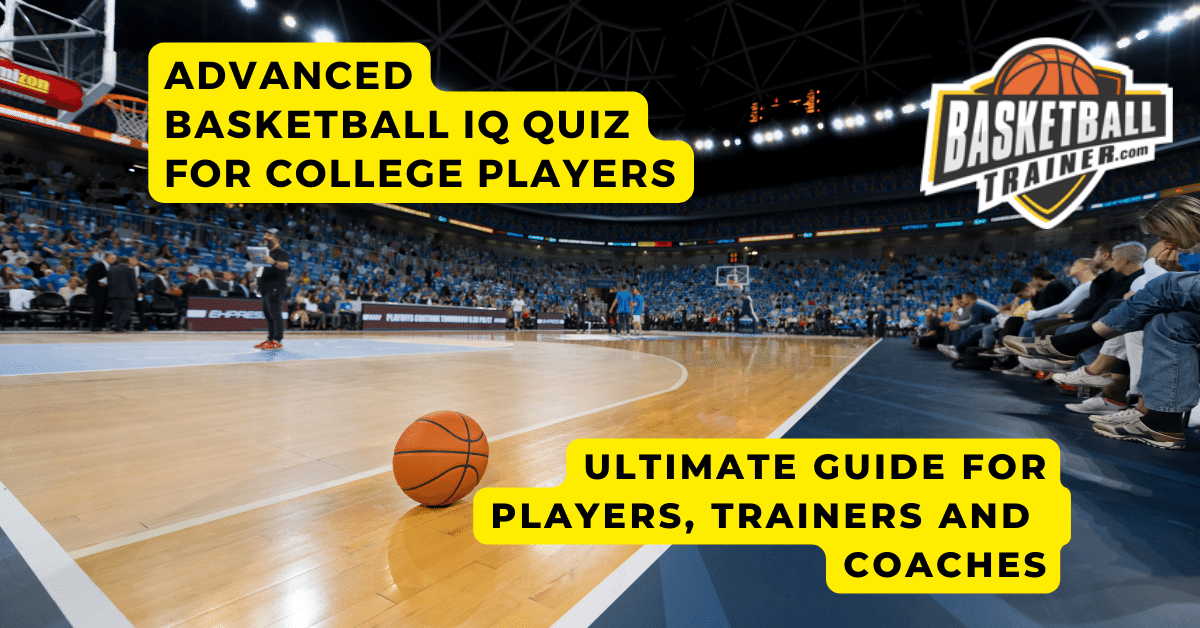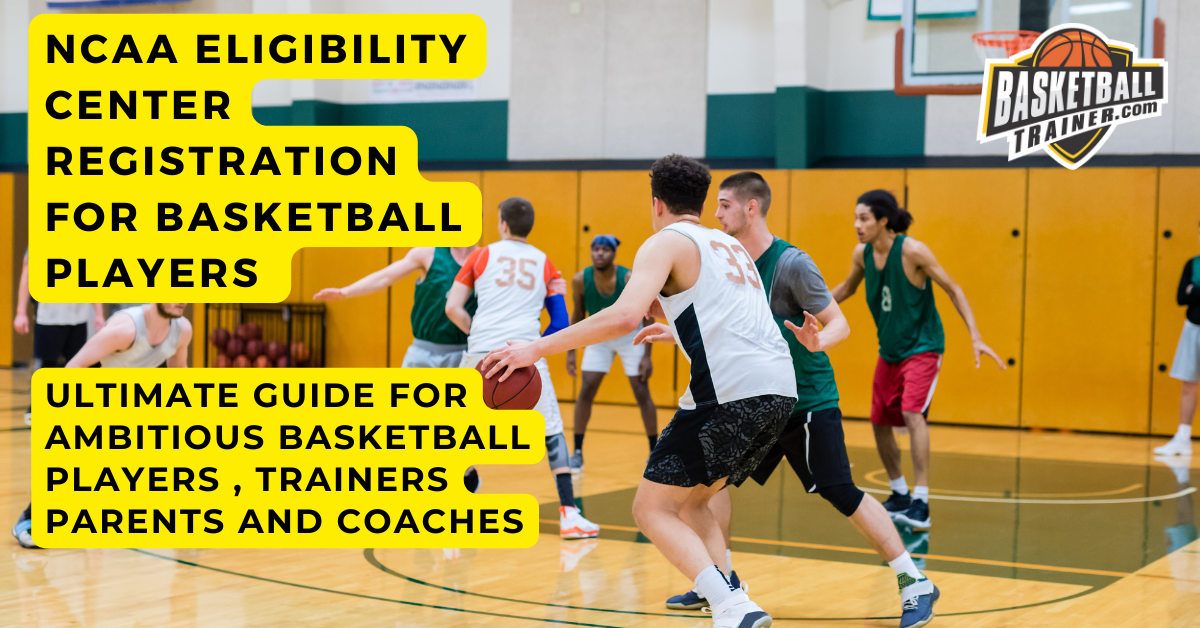
Off-the-court basketball training is a transformative approach that has revolutionized how players prepare for the game. In this fast-paced and highly competitive sport, the significance of off-the-court training cannot be overstated. It encompasses a range of activities that focus on skill development, physical conditioning, mental preparation, and overall well-being outside the basketball court.
Evidence: Consider the success story of Michael Jordan, who attributed a significant part of his legendary career to off-the-court training. He once said, “My attitude is that if you push me towards something that you think is a weakness, then I will turn that perceived weakness into a strength.” This approach to improvement off the court is mirrored by many elite players.
Quote: Coach John Wooden, a renowned basketball coach, emphasized the holistic nature of training: “Don’t measure yourself by what you have accomplished, but by what you should have accomplished with your ability.” This underscores the importance of realizing your full potential through comprehensive off-the-court training.
Next Steps for Ambitious Basketball Players:
- Self-Assessment: Begin by honestly assessing your strengths and weaknesses as a basketball player. This will serve as your starting point for focused off-the-court training. For example, record your shooting percentages, dribbling proficiency, and defensive capabilities.
- Goal Setting: Establish clear, measurable goals for your off-the-court training. Whether it’s improving your shooting accuracy or increasing your agility, setting specific objectives will keep you motivated. For instance, aim to increase your free throw percentage from 70% to 85% within three months.
- Research and Resources: Explore the wealth of resources available, including books, online courses, and training apps. These tools can provide valuable insights and guidance for your off-the-court journey. Consider reading “The Mamba Mentality” by Kobe Bryant and using basketball training apps like HomeCourt or ShotTracker.
II. Off-the-Court Skill Development
Description: Off-the-court skill development is the cornerstone of becoming a well-rounded basketball player. It involves refining your basketball-specific skills in a controlled environment, away from the pressures of the game. This training focuses on areas like shooting accuracy, ball-handling, and passing precision.
Evidence: Take the example of Kobe Bryant, known for his relentless work ethic. He once said, “I can’t relate to lazy people. We don’t speak the same language. I don’t understand you. I don’t want to understand you.” Kobe’s dedication to off-the-court skill development set him apart as one of the greatest players in NBA history.
Quote: Dr. Carol Dweck, a psychologist known for her work on growth mindset, emphasizes the importance of effort: “Effort is one of those things that gives meaning to life. Effort means you care about something, that something is important to you and you are willing to work for it.”
Next Steps for Ambitious Basketball Players:
- Fundamental Drills: Start with basic drills that target your weaknesses. If you struggle with dribbling, practice stationary dribbling drills in your garage or driveway for 20 minutes daily. If your shooting needs improvement, dedicate focused time to form shooting drills.
- Consistent Practice: Establish a practice routine that includes daily shooting sessions, ball-handling drills, and defensive footwork exercises. For example, practice your mid-range jump shot for 30 minutes every morning and work on crossover dribbles for 20 minutes each evening.
- Seek Expert Guidance: Consider hiring a specialized basketball trainer or coach who can provide personalized feedback and guidance to accelerate your skill development. They can tailor drills to your specific needs and help you refine your techniques.
III. Physical Conditioning Off the Court
Description: Physical conditioning off the court is about building the strength, agility, and endurance needed to excel in basketball. It’s not just about bulking up but optimizing your body for the unique demands of the game. Off-the-court conditioning allows you to work on your athleticism in a controlled environment.
Evidence: LeBron James, one of the most physically dominant players in NBA history, invests heavily in off-the-court conditioning. His dedication to maintaining peak physical condition has contributed to his longevity and success in the league.
Quote: Dr. Michael Joyner, a leading physiologist, emphasizes the science behind conditioning: “Athletes can significantly enhance their performance through targeted off-the-court conditioning. It’s about fine-tuning the body to operate at its maximum potential.”
Next Steps for Ambitious Basketball Players:
- Strength Training: Begin a structured strength training program that includes exercises like chair squats, reverse lunges, pushups, and bench presses. Focus on building lower body strength with exercises like Bulgarian split squats and box jumps. Consult with a certified strength coach to create a customized plan.
- Agility Drills: Incorporate agility drills such as ladder drills, cone drills, and shuttle runs into your routine. For example, perform “Lateral Cone Drills” to improve lateral quickness and “Agility Ladder Drills” for enhanced footwork.
- Endurance Workouts: Implement endurance workouts like interval running. Start with interval sprints, such as 30 seconds of sprinting followed by 30 seconds of jogging, and gradually increase the intensity and duration. Monitor your progress by tracking your running times and distances.
IV. Mental Conditioning for Basketball
Description: Mental conditioning off the court is a vital aspect of basketball training. It involves developing the mental resilience, focus, and confidence required to excel in the game. Off-the-court mental conditioning allows players to work on their mental game without the pressures of competition.
Evidence: LeBron James, renowned for his mental toughness, has spoken about the importance of mental conditioning. He once stated, “I think the mental side of it is huge. It’s probably even more important than the physical side. If you don’t have the mental toughness, the physical side doesn’t even matter.
Quote: Dr. Angela Duckworth, a psychologist and author, emphasizes the role of grit: “Grit is living life like it’s a marathon, not a sprint.” This mindset applies to basketball as well, where mental conditioning is essential for enduring challenges and setbacks.
Next Steps for Ambitious Basketball Players:
- Visualization Techniques: Incorporate visualization exercises into your daily routine. Visualize successful plays, confident performances, and overcoming challenges. This mental rehearsal enhances focus and confidence.
- Mindfulness and Meditation: Practice mindfulness and meditation to improve mental clarity and emotional control. Simple mindfulness exercises, like deep breathing, can be done daily to reduce anxiety and enhance concentration.
- Positive Self-Talk: Monitor your self-talk. Replace negative thoughts with positive affirmations. For instance, replace “I can’t make this shot” with “I am a skilled shooter, and I can make this shot.”
V. Nutrition and Recovery for Basketball
Description: Proper nutrition and recovery off the court are fundamental for sustaining peak performance. What you eat and how you recover can significantly impact your energy levels, muscle recovery, and overall well-being as a basketball player.
Evidence: Stephen Curry, a two-time NBA MVP, emphasizes the importance of nutrition: “I’ve got to fuel my body in the right way, make sure I’m hydrated, make sure I’m getting the right nutrients to be able to recover and stay strong.”
Quote: Dr. Stacy Sims, a nutrition scientist, highlights hydration: “Hydration isn’t just about drinking water; it’s about staying hydrated by eating the right foods, too. Foods high in water content can help keep you hydrated.”
Next Steps for Ambitious Basketball Players:
- Balanced Diet: Follow a balanced diet that includes carbohydrates, proteins, healthy fats, and a variety of fruits and vegetables. Opt for whole grains, lean proteins, and unsaturated fats.
- Hydration: Stay well-hydrated by drinking water throughout the day. During intense workouts, consider sports drinks that replenish electrolytes lost through sweat.
- Recovery Strategies: Incorporate post-workout recovery routines. Stretching, foam rolling, and massages can help alleviate muscle soreness. Aim for 7-9 hours of quality sleep to aid recovery.
VI. Injury Prevention and Off-the-Court Care
Description: Preventing injuries off the court is essential for maintaining long-term performance. Injury prevention includes specific exercises, rest, and recovery strategies that can significantly reduce the risk of common basketball injuries.
Evidence: Kevin Durant, a superstar player, experienced a severe Achilles injury. His rehabilitation and off-the-court care were crucial in his successful return to the game.
Quote: Dr. James Andrews, a renowned orthopedic surgeon, stresses the importance of prehabilitation: “An ounce of prevention is worth a pound of cure. Prehabilitation—strengthening before injury—can help athletes avoid common injuries.”
Next Steps for Ambitious Basketball Players:
- Dynamic Warm-Up: Prior to every workout or game, perform a dynamic warm-up that includes stretching and mobility exercises. Focus on the muscle groups most used in basketball.
- Strength and Stability Training: Incorporate exercises that target joint stability and muscle strength, such as balance exercises, resistance band work, and plyometric training.
- Rest and Recovery: Ensure you have adequate rest days between intense workouts. Listen to your body, and don’t push through pain. If you experience discomfort, seek professional advice.
VII. Off-the-Court Basketball Training Equipment and Gear
Description: The right equipment and gear can significantly enhance your off-the-court training experience. Selecting appropriate footwear, training aids, and apparel is essential for comfort and performance.
Evidence: Many NBA players collaborate with sportswear companies to develop signature shoes and gear tailored to their training needs. This showcases the importance of specialized equipment.
Quote: Dr. Emily Splichal, a podiatrist, highlights footwear: “The right basketball shoes can improve stability, reduce injury risk, and enhance performance. Choose shoes that fit well and provide adequate support.”
Next Steps for Ambitious Basketball Players:
- Footwear Selection: Invest in high-quality basketball shoes that offer proper ankle support, cushioning, and traction. Ensure they fit snugly and provide stability.
- Training Aids: Explore training aids such as resistance bands, agility cones, and weighted vests to intensify your off-the-court workouts. These aids can help you target specific skills and muscle groups.
- Performance Apparel: Choose moisture-wicking, breathable apparel that keeps you comfortable during intense training sessions. Compression clothing can aid in muscle recovery.
VIII. Embracing Technology Off the Court
Description: The integration of technology has transformed off-the-court basketball training, offering players advanced tools for analysis, improvement, and virtual coaching. Embracing technology can provide a competitive edge in skill development.
Evidence: NBA teams have adopted technology extensively for player development. Tools like video analysis, wearables, and virtual reality training are used to enhance players’ skills and decision-making.
Quote: Dr. Charles Spatz, a sports technology expert, emphasizes the role of technology: “Technology has revolutionized basketball training. It offers real-time feedback, personalized drills, and data-driven insights that can elevate a player’s game.”
Next Steps for Ambitious Basketball Players:
- Video Analysis: Utilize video analysis software like Hudl or Coach’s Eye to review your training sessions. Analyze your form, shot release, and footwork for areas of improvement.
- Wearable Tech: Consider wearable devices like fitness trackers or smart basketballs to track your performance metrics. These devices monitor your movements, shooting accuracy, and physical exertion.
- Virtual Coaching: Explore virtual coaching platforms like HomeCourt or FastModel Sports. These platforms offer personalized drills, workouts, and coaching feedback based on your performance data.
IX. Customized Off-the-Court Training Plans
Description: Tailoring your off-the-court training plan to your individual needs is essential for optimal improvement. Customized training plans address your weaknesses, enhance your strengths, and optimize your overall performance.
Evidence: Top-level athletes, including NBA stars, have personalized training plans designed to align with their unique skill sets and goals. This personalized approach is a hallmark of successful player development.
Quote: Coach Phil Jackson, known for coaching multiple NBA championship-winning teams, emphasizes customization: “One of the most important aspects of coaching is to tailor your approach to each player. What works for one may not work for another.”
Next Steps for Ambitious Basketball Players:
- Position-Specific Training: Identify your position on the court (e.g., point guard, shooting guard, center) and focus on position-specific drills and workouts that enhance your role.
- Addressing Weaknesses: Work closely with a coach or trainer to identify your weaknesses as a player. Create training plans that target those specific areas. For instance, if you struggle with speed, focus on agility drills.
- Long-Term Periodization: Develop a long-term training plan that includes cycles of building strength, enhancing skills, and peaking for key events like tryouts or tournaments. This periodization approach ensures continuous progress.
X. Insights from Athletes
Description: Learning from the experiences of professional athletes can provide valuable insights into off-the-court training routines, mindsets, and habits that contribute to their success.
Evidence: Numerous athletes have openly shared their off-the-court training routines and philosophies, providing aspiring players with inspiration and guidance.
Quote: LeBron James shares his training philosophy: “It’s not about how much you do. It’s about how much you can do consistently.”
Next Steps for Ambitious Basketball Players:
- Player Interviews: Seek interviews and documentaries featuring professional basketball players. Gain insights into their daily routines, training regimens, and mental approaches.
- Biographies and Autobiographies: Read books or autobiographies authored by athletes. These often contain valuable anecdotes and training secrets. For instance, Kobe Bryant’s “The Mamba Mentality” offers profound insights.
- Podcasts and Webinars: Listen to podcasts and attend webinars where athletes discuss their training journeys. This real-time content provides current perspectives on off-the-court training.
XI. Case Studies in Off-the-Court Training
Description: Analyzing case studies of successful off-the-court training regimens can provide valuable lessons and inspiration for aspiring players. These studies highlight the strategies that propelled athletes to the highest levels of performance.
Evidence: Case studies often explore the training journeys of players who have achieved remarkable success, showcasing their training routines, obstacles, and breakthrough moments.
Quote: Coach Pat Riley emphasizes the value of studying success: “Excellence is the gradual result of always striving to do better.”
Next Steps for Ambitious Basketball Players:
- Documented Case Studies: Look for documented case studies in books, articles, or video documentaries that focus on the off-the-court training of successful athletes.
- Analyze Training Patterns: Study the training patterns and methodologies employed by these athletes. Identify commonalities and unique approaches that align with your goals.
- Implement Key Takeaways: Apply the key takeaways from case studies to your own training regimen. Customize your workouts and mindset based on the strategies that resonate with you.
XII. Coaching for Off-the-Court Training
Description: Coaches play a pivotal role in guiding and shaping a player’s off-the-court training journey. Understanding the role of coaching in off-the-court skill development is essential for ambitious players.
Evidence: Many successful basketball players credit their coaches for their development, both on and off the court. The guidance of a knowledgeable coach can be a game-changer.
Quote: Coach Gregg Popovich, a highly regarded NBA coach, emphasizes the coach-player relationship: “Coaches are there to develop, instruct, and nurture players on and off the court. It’s a partnership built on trust and growth.”
Next Steps for Ambitious Basketball Players:
- Find a Mentor: Seek a mentor or coach who specializes in off-the-court training. This coach can provide personalized guidance and design workouts to suit your needs.
- Communication: Establish open and effective communication with your coach or mentor. Discuss your goals, areas for improvement, and any challenges you face during your off-the-court training.
- Feedback Loop: Create a feedback loop with your coach. Regularly review your progress, adjust your training plan as needed, and maintain a constructive coach-player relationship.
XIII. Monitoring Progress Off the Court
Description: Monitoring your progress off the court is essential for tracking improvement and making necessary adjustments to your training regimen. It involves keeping detailed records of your workouts, performance metrics, and skill development.
Evidence: Athletes who track their progress consistently are better equipped to identify areas of strength and areas that require improvement. This data-driven approach is crucial for long-term success.
Quote: Dr. Carol Dweck highlights the power of data: “In the world of sports, as in many endeavors, data is your ally. It tells you where you are, where you need to go, and how to get there.”
Next Steps for Ambitious Basketball Players:
- Training Logs: Maintain a detailed training log that includes workout dates, exercises, sets, reps, and performance notes. This log serves as a valuable reference to track your progress.
- Performance Metrics: Measure performance metrics regularly. For instance, record your three-point shooting percentage, sprint times, or vertical jump height. Compare these metrics over time to assess improvement.
- Self-Reflection: Periodically reflect on your off-the-court journey. Consider what’s working well, where you’ve made strides, and areas that require extra attention. Use this self-assessment to make informed adjustments to your training plan.
XIV. FAQs (Frequently Asked Questions)
Description: Addressing common questions about off-the-court basketball training provides clarity and guidance for players seeking to embark on this journey. These FAQs cover key aspects of off-the-court training.
Evidence: Players often have questions about the specifics of off-the-court training. Providing clear and informative answers can help them make informed decisions.
Quote: Shaquille O’Neal shares his perspective: “The only dumb question is the one that is never asked. Don’t be afraid to seek knowledge, as it’s the key to growth.”
FAQs for Ambitious Basketball Players:
- What is off-the-court basketball training?
- How often should I engage in off-the-court training?
- Can off-the-court training complement on-court practice?
- What equipment is necessary for off-the-court training?
- Is off-the-court training suitable for beginners?
- How do I measure progress in off-the-court training?
- Are there age restrictions for off-the-court training?
- Can off-the-court training help prevent injuries?
- What are the mental benefits of off-the-court training?
- How do I create a personalized off-the-court training plan?
XV. Additional Resources for Off-the-Court Basketball Training
Description: Providing additional resources empowers players to delve deeper into off-the-court training. These resources include recommended books, online courses, and top-notch training apps and websites.
Evidence: Access to quality resources enhances a player’s understanding and application of off-the-court training principles. Learning from experts and fellow athletes can be invaluable.
Quote: Coach Phil Jackson on the value of resources: “Every resource you need to succeed is available; you just need the curiosity and determination to seek them out.”
Additional Resources for Ambitious Basketball Players:
- Recommended Books on Off-the-Court Skill Development:
- “The Mamba Mentality” by Kobe Bryant
- “Relentless: From Good to Great to Unstoppable” by Tim S. Grover
- “Mindset: The New Psychology of Success” by Dr. Carol S. Dweck
- Online Courses and Tutorials for Off-the-Court Training:
- Udemy’s “Basketball Training: How to Get in Shape for the Season”
- Coursera’s “Sports and Building Aerobic Exercise Programs”
- Skillshare’s “Basketball Fundamentals: Mastering the Basics”
- Top Off-the-Court Basketball Training Apps and Websites:
- HomeCourt: A comprehensive basketball training app
- FastModel Sports: Offers play diagramming and coaching resources
- ShotTracker: Tracks shooting accuracy and provides real-time feedback













